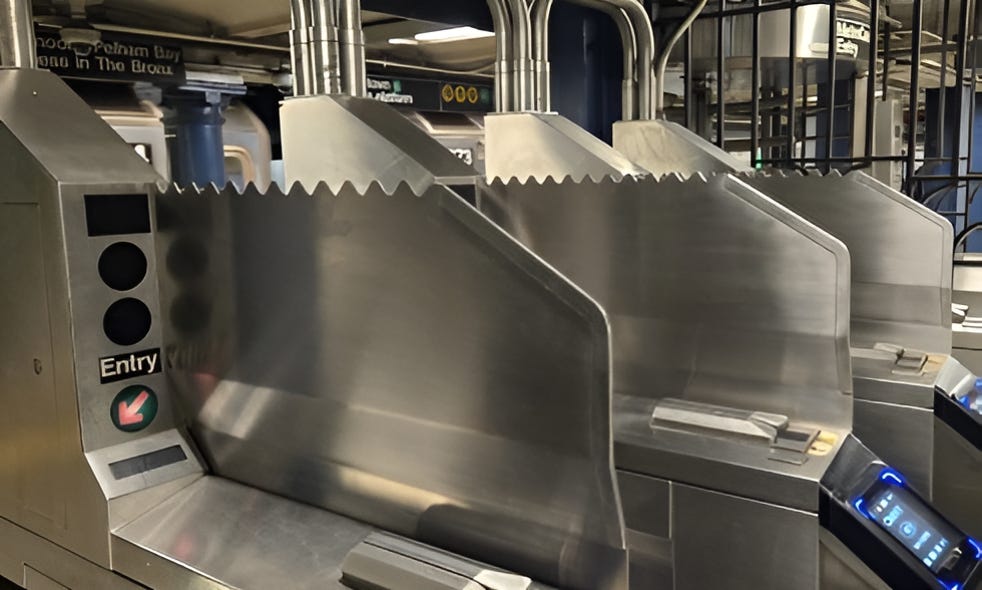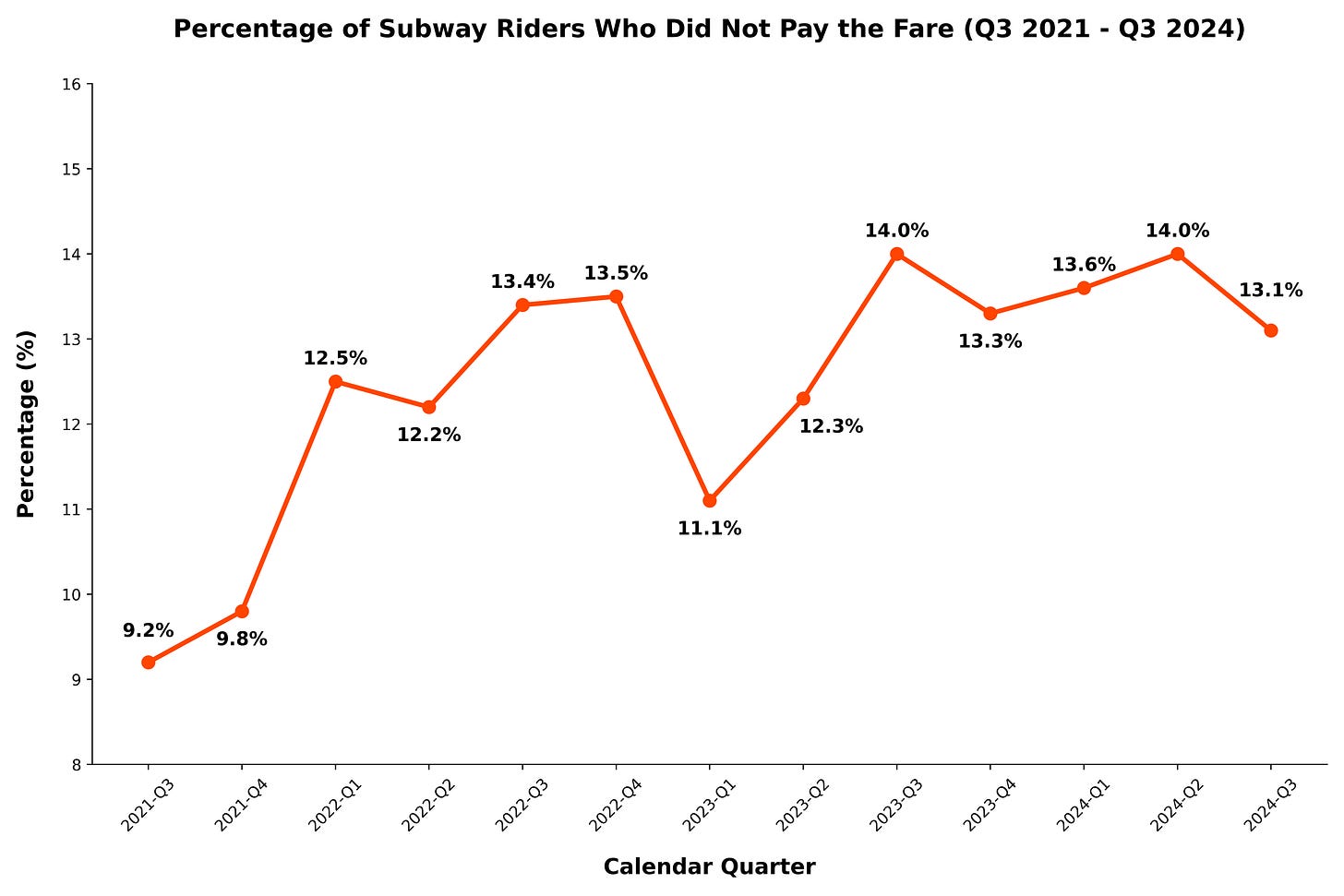MTA Adds Spikes to Turnstiles in One Subway Station, Draws Backlash from Riders
The MTA’s latest attempt to stop fare evaders by putting metal spikes on turnstiles has commuters calling it dangerous, divisive and ineffective.
Commuters were stunned to find that the Metropolitan Transportation Authority (MTA) has installed metal spikes on turnstiles at the Lexington Avenue/59th Street subway station. Presumably, these spikes are designed to deter individuals from jumping over turnstiles by adding a physical barrier that could cause pain upon contact.
The introduction of turnstile spikes has sparked controversy among residents and commuters. Some critics argue that the spikes may not effectively address all forms of fare evasion, such as slipping through emergency doors or ducking under turnstiles, and could pose safety hazards.
“Spikes? Really? This feels like a medieval solution to a modern problem,” said Darren Fields, a Queens resident who commutes daily into Manhattan. “People who want to get through will find another way.”
Others raise concerns that the presence of these spikes may contribute to a sense of mistrust between the MTA and subway riders.
Some suggest that fare evasion is a symptom of broader socioeconomic issues, and punitive measures like this may disproportionately affect low-income residents who rely on public transit the most.
“This doesn’t fix why people are jumping the turnstiles in the first place,” said Carla Rivera, a Bronx native and college student. “If someone can’t afford a ride, is hurting them really the answer?”
The city recently expanded the Fair Fares program, which provides discounted transit fares to low-income residents, increasing the program’s income eligibility to 145% of the federal poverty level, up from 120%. This expansion is expected to assist over 330,000 lower-income residents in managing their transportation costs.
Fair Fares NYC offers a 50% discount on subway rides, eligible bus fares and Access-A-Ride trips, with pay-per-ride, weekly unlimited and monthly unlimited options available.
Currently, the metal spikes are only in the Lexington Avenue/59th Street station. There have been no official statements from the MTA addressing the installation of spikes at this station specifically, or plans to expand this measure system-wide.
The turnstiles spikes appear to be part of a series of pilot programs aimed at evaluating the effectiveness of various deterrents against fare evasion.
Fare evasion has been a persistent issue for the MTA, with losses from subway fare evasions alone escalating from $285 million in 2022 to a projected $360 million in 2024.
The MTA has implemented various deterrent strategies, including the installation of higher fins on turnstiles to prevent "back-cocking," a method where individuals pull back turnstiles to slip through without payment. These modifications have reportedly led to an 80% reduction in such incidents at upgraded turnstiles.
More police officers have also been deployed to subway stations over the past few years, especially high-traffic stations and areas where fare evasion was most prevalent. Governor Hochul recently announced plans to deploy even more officers to every subway train and station.
“Shameless fare evaders will finally be stopped with modernized gates,” said Governor Hochul in her most recent State of the State address. “This will not only make the subway less chaotic, it will help strengthen the financial footing of the MTA.”
The MTA's installation of turnstile spikes at the Lexington Avenue/59th Street station represents an aggressive yet polarizing approach to fighting fare evasion. While aiming to address huge revenue losses, the measure raises serious legal, ethical and resource allocation questions.
The effectiveness and consequences of this move remain unclear, as the MTA has yet to comment on its viability to such a pervasive issue.



